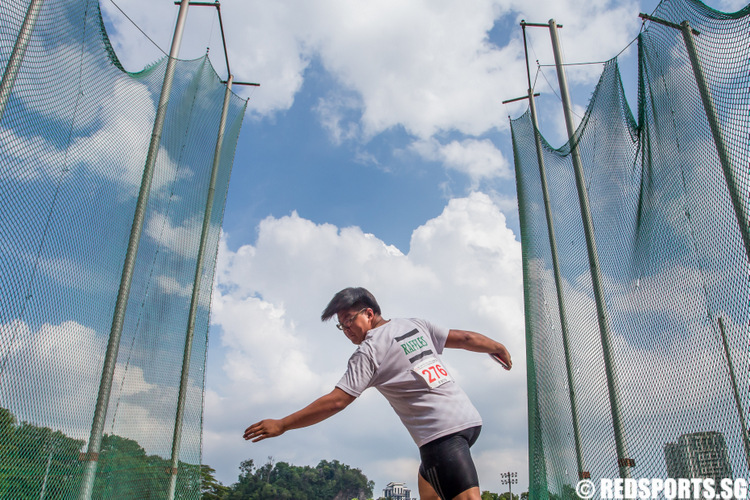Contributed by reader Zing
Cycling is good exercise - low impact, works muscles, burns calories. Cycling is also good exercise because it gets your heart rate high – for the wrong reasons. If you cycle on the roads, cars ambush you at side roads, taxis stop without warning, buses squeeze you into the kerb. Nothing like a close shave to get the adrenalin pumping.
The last time I cycled down a main road, only one driver slowed down to let me go past a slip road, and even that was dangerous because I nearly took both hands off to applaud him. Nonetheless, it renewed my faith in drivers. This lasted till the next two junctions, where despite clear arm signals, I was forced onto the slip road and had to dismount at the zebra crossing. And let's not even talk about trying to filter right.
Ok I shouldn't get snarky about drivers; there's probably a comparable proportion of inconsiderate cyclists about. Those who shoot red lights, cycle on pavements, have no lights at night, lock bikes to wheelchair ramp railings — the list goes on.
The issues of cyclist safety and cycling safely have risen to prominence, particularly following the pavement-sharing trial in Tampines. There have been some encouraging measures to make Singapore more cycling-friendly:
Bike lanes in some HDB towns (averaging 10km each) and along park connectors (360km by 2020), warnings on common training routes (119 signs), folding bikes on public transport (114 x 64 x 36cm please), more parking at MRT stations (823 new spaces; check out multi-storey parking at Pasir Ris).
These are great, but cycling for transport remains a challenge if your destination isn't the nearest MRT station or the next park, and if your bike can't fold into a briefcase. Outside Tampines, HDB town lanes and park connectors, cyclists are stuck in a no man's lane - illegal on pavements, unwelcome on roads.
Each year, 8 to 10% of traffic accident fatalities are cyclists, a proportion similar to that from motorcar fatalities.1 Except that people in cars far outnumber people on bikes. Over 2007 and 2008, more than 1000 accidents involved cyclists; 44 were fatal. Hope this year turns out better.
These ugly statistical potholes reveal some underlying problems on the road to greater transport safety for all. The most glaring is a lack of regard for cyclists, in terms of infrastructure provision and the behaviour of other road users. The result is only to everyone's detriment.
The Road Traffic Act states that ´every bicycle shall be ridden close to the left hand edge of the roadway'.2 This is unhelpfully vague and only encourages territorial drivers to squeeze cyclists into the kerb. It's not funny if your pedal clips the kerb. Time to update this 55-year-old law.
But I'm not here to lecture drivers or lawyers; I can't drive. And from personal experience and anecdotal evidence, there's a heartening number of drivers who aren't cyclist mowing machines.
The point is that there is a chicken-and-egg problem with cycling for transport in Singapore. The lack of cyclists on roads does not encourage investment into cycling infrastructure. And the lack of cycling infrastructure does not encourage cyclists on roads. It is, yes, a vicious cycle.
But how do we know it's not worth spending money on more cycling infrastructure? The current number of cyclists on roads, most of whom are foreign talent of all kinds, is no indication of the latent demand for cycling. That's why I've started a survey to try measure this, at http://abetterride.wordpress.com.
I've been advised to wake up my idea - nobody would cycle in Singapore weather; sweat or rain, the wet look went out with Brylcreem you know. And drivers would never respect bike lanes, just look at bus lanes. And there's no space.
Yes there'll be a limit to how many people would cycle happily in our humidity. And yes installing bike lanes is probably more than just repainting lines on roads. In the UK at least, 1km of bike lane can cost £37,000 - that's $86,000 at deflated exchange rates.3 You see why the powers that be are stalling.
I've just stuck a spanner in my own wheel, but if I didn't do it the LTA would. Well we can't change our weather nor land area, but we can change our attitudes and behaviour. Stop squeezing cyclists to the sidelines. For one, put drivers through a simulation of cycling on roads and vice versa. Education of all road users may be painstakingly slow, but it's the best value for money.
Make the roads safer for cycling, because that's the surest way to increase cyclists. And more cyclists makes the roads safer for cycling. Start a virtuous cycle, spin a revolutionary ride. And even if only 1% of the population cycles for transport, that'd be 65,000 people by 2020. Tell me they won't be worth building more bike lanes for.
About the writer
This article was written by Zing Lim, a Master's degree student at the London School of Economics. You can help do her survey on cycling in Singapore at - http://abetterride.wordpress.com. It doesn't matter if you can't cycle or don't have a bike. Thanks very much, and get your friends on it too!
Other than that, Zing studies Environment Policy, and previously studied Geography and is due to work for the government. When not stuck on the laptop, she may be found up a mountain, talking to grandma, in the pool, playing piano, on a climbing wall, or riding the bike (not all at once). She most enjoys introducing people to the outdoors and in future, hopes to do more social work, learn to sail, keep speaking Teochew, and of course, live to see a cycling system work in Singapore.
Related Links
http://www.flickr.com/photos/mr-brown/1431651064/
(Mr Brown’s comments on his own photo make the point)
http://back2nature.blogspot.com/2009/02/dedicated.html
(Blogger Dennis Cheong took this photo from an ST article on ´dedicated bike lanes' – spot the irony!)
1 Figures from Singapore Police Force statistics for 2003 - 2008; http://www.spf.gov.sg/stats/traf2008_concern.htm, accessed 03 Aug 2009.
2 Road Traffic Act of Singapore 1955, Chapter 270, Section 140.8, as quoted by the Singapore Amateur Cycling Association cycling communiqué of 22 July 2003, p.5 http://www.cycling.org.sg/Communiques/saca_communique_Laws_Applicable_to_Cyclists_in_Singapore_(22.7.03).pdf, accessed 03 Aug 2009
3 UK building costs extrapolated from "Two Wheels" by Matt Seaton (2007), 2nd ed, p.208











Interesting. This article raises several relationships between people who use the roads and walkways – cyclists and motorists, cyclists and pedestrians, runners and motorists, runners and pedestrians, et cetera. I have cycled on the roads before and am also a licensed driver but here, I would like to share my experiences as a runner who has had his share of brushes with motorists running on the side of roads.
I prefer running on the road sometimes to on the sidewalks because the road is flatter and also to avoid the disruption to my momentum when I meet the occasional undiscerning pedestrian. People may say runners don’t belong on the road and perhaps rightly so because of the dangers to which I was reminded of a week ago while out on one of my runs. A car brushed against my hand before a junction where it made a left turn and it was not like there was no space to his right! Such inconsiderate drivers irk me all the time but I also understand not all are like that.
There was another occasion when a cab driver pulled up beside me while i was running. And to my surprise, it was just so he could offer me a word of caution as to the perils of running on the road, albeit at the side of it.
His brother had died after being hit by a car while running at the side of the road. That was a sobering reminder what a car in the hands of an inconsiderate driver can do.
Yes, the debate can go on and on about how much of the roads runners, cyclists and motorists are entitled to. But at the end of the day, the roads are for all to use and it would be so much safer and pleasant for all of us if we could just exercise our patience and civic-mindedness. =)
Hi Colt, thanks for sharing your experiences. I have sometimes run on the road but only where traffic is slow moving. Usually find stepping out on the road to overtake another pedestrian is dangerous enough! It definitely disrupts one’s rhythm, but maybe it’s good training.
I’m just learning to drive now and being behind the wheel highlights how easy it is to misjudge something, and how dangerous it can be to cycle/run on the road. High visibility clothing definitely helps.
I agree that being considerate is key, but although I do run too, I’d say roads should probably be left for wheeled vehicles. That said, the one time in London I saw someone on a kid scooter (like a skateboard with handlebars) leading a long line of buses in the bus lane probably takes the cake!
I’ve emailed ST, LTA and the PR town council about this incident and thought it might interest readers of your blog and get some suggestions about how to handle such an incident.
On the 4th of March at about noon, I was walking along the footpath by the side of Elias Park Primary School, opposite block 510. I was carrying quite a lot of things. I heard the dinging of a bicycle bell some distance behind me. It was a repeated,persistent dinging and seemed to be approaching at quite a speed. I had no choice but to keep on walking along as I had no idea whether to move to the left or to the right, concerned that I would step into the cyclist’s path. When the dinging came up very close behind me, I stopped walking and turned around to look.
The cyclist braked and was almost on top of me. I had thought that it was an impatient youngster, but it turned out to be a man of about 60. He shouted at me and said something to the effect of “you think you own the road(?) ah?”.
I replied, “You are very rude.”
He shouted that I ‘should move aside when I heard him coming’.
I then replied, “Which side do I move to? I don’t know which side you are coming from, left or right? You were cycling too fast”
I had my umbrella opened, but down to the side and he raised his arm and hit at it and cycled by, all the time yelling the ‘f’ word at me. My umbrella suddenly went limp and I realised that he had hit it so hard that it had bent. I followed him and called out that he had broken my umbrella but he used the ‘f’ word again and pedalled off. I couldn’t catch up with him.
When I got to my daughter’s home, I told my daughter about it and I later called the neighbourhood police and spoke to a Corporal Koh, who told me that I “should have taken down the cyclist’s particulars.”
What particulars? There was no license number to take down and he wasn’t about to stop and give me his particulars although I would recognise him if I ever saw him again. That corporal simply said there was nothing much they could do and said ‘goodbye’ and hung up.
My point is, without licensing for bicycles, such people get away with acts of aggression and nothing can be done about it? What if he hadn’t braked in time and hit me? How would I get redress for that?
This is not a once off incident. I’ve had 2 other brushes with nasty cyclists within a few months. I hope the relevant authorities will look into protecting pedestrians against errant cyclists.
It would be helpful if the town council took steps to continually educate cyclists on cycling etiquettes.
Thank you.
@Mary Chan: What a nasty fellow. He should have stopped. If he doesn’t want to cycle on the road, he should give way to pedestrians on sidewalks. Where else are pedestrians and runners supposed to go? The road?
I’ve had to watch out for bikes myself while running on sidewalks.
Hi Herrick,
Thanks for sharing your experiences in Perth, always good to hear what it’s like in a different place. Yes behaviour is more important than infrastructure, that’s exactly the conclusion I came to while writing this article. There’s something very reaffirming about seeing a queue of cars waiting patiently behind a cyclist crawling up a hill (I’ve been that cyclist before!).
A smile campaign could be fun – say for speeding, ‘smile, you’re on camera!’ – or those yellow boxes, repaint with smiley faces saying ‘don’t squish me!’. Right well, wonder how it’d work in the downtown rush hour. Don’t mean to sound cynical, I just think it’s hard to hit the right notes with a campaign, especially since there’s always some campaign going on (cue: rap, a happy journey starts like that). Doesn’t mean we shouldn’t try though.
On road tax – it is indeed an argument you often hear from motorists. A few possible rejoinders to that.
(1) Cars cause much more wear and tear to roads than cyclists can ever hope to.
(2) Ditto for environmental pollution, which is an externality since it affects others as well.
(3) Cars take up much more space on the road per person than bikes, you’d need a fully occupied car to equal cycling.
(4) In Singapore’s case, if you compare COE/tax payment of cars to motorcycles, then scaling the payments down by a similar proportion for bikes will give you a fairly nominal figure.
Ok I haven’t thought through all the possible rejoinders properly yet, any more suggestions/criticisms are welcome!
Cheers,
Zing 🙂
People tend to make comparisons, and so will i. It is different here in Perth. Even though the infrastructure for cycling is a little better than in Singapore, it has been noted that the infrastructure is not the key to having a safe cycling environment. It is rather, the people who determine how bicycle friendly the place is. I have frequently seen drivers giving way to cyclists to the extent of slowing down rather than honking even though the cyclist was using a lane.
I remember the Traffic Police having a ‘smile’ campaign where motorists were encouraged to give way to each other, i reckon we could have a similar campaign that emphasise the safety of cyclists as well. Afterall, they are still humans who are trying to get from point a to b. Although i’m guessing that the key to the campaign’s success is to change the mindset of the motorists who are paying Road Tax. Yes the cyclists are not paying any.
Well written – concise and enjoyable. All the relevant points nicely put across. BUT it makes me nervous for all the cyclists on the roads, and that includes YOU. I certainly hope it can help get some change going.
Well done, YY. Just the right tone to get the notice of the policy makers. Hope it will be read by some of the ‘power people’ to whom I had forwarded your survey earlier on.
What a wonderful and witty article. Thanks, Zing.